Popular categories
Looking for a yarn?
Order DROPS Needles & Hooks
Clicking the ORDER button will redirect you to Wool Warehouse Direct Ltd website
The yarn cost is calculated from the pattern’s smallest size and the yarn’s cheapest product type. Looking for an even better price? You might find it on the DROPS Deals!
Elodie Cardigan
Knitted jacket in DROPS Air. The piece is worked top down with European/diagonal shoulders and V-neck. Sizes S - XXXL.
DROPS Design: Pattern ai-427
Yarn group C or A + A
-------------------------------------------------------
SIZES:
S - M - L - XL - XXL - XXXL
YARN:
DROPS AIR from Garnstudio (belongs to yarn group C)
300-350-350-400-450-450 g colour 24, pink
BUTTONS:
DROPS BUTTONS NO 603: 3 items in all sizes.
NEEDLES:
DROPS CIRCULAR NEEDLE SIZE 5 MM: Length 40 cm and 80 cm.
DROPS CIRCULAR NEEDLE SIZE 4 MM: Length 80 cm.
DROPS DOUBLE POINTED NEEDLES SIZE 5 MM.
DROPS DOUBLE POINTED NEEDLES SIZE 4 MM.
The technique MAGIC LOOP can be used – you then only need circular needle of 80 cm in each size.
KNITTING TENSION:
17 stitches in width and 22 rows in height with stocking stitch = 10 x 10 cm.
NOTE: Needle size is only a guide. If you get too many stitches on 10 cm, change to a larger needle size. If you get too few stitches on 10 cm, change to a smaller needle size.
-------------------------------------------------------
Alternative Yarn – See how to change yarns here
Yarn Groups A to F – Use the same pattern and change the yarn here
Yarn usage using an alternative yarn – Use our yarn converter here
-------------------------------------------------------
Order DROPS Needles & Hooks
Clicking the ORDER button will redirect you to Wool Warehouse Direct Ltd website
The yarn cost is calculated from the pattern’s smallest size and the yarn’s cheapest product type. Looking for an even better price? You might find it on the DROPS Deals!
- English (UK/cm)
- Česky
- Dansk
- Deutsch
- Eesti keel
- English (UK/cm)
- English (US/in)
- Español
- Français
- Íslenska
- Italiano
- Magyar
- Nederlands
- Norsk
- Polski
- Português
- Suomi
- Svenska
- English (UK/cm), Bulgaria
- English (UK/cm), Croatia
- English (UK/cm), Greece
- English (UK/cm), Latvia
- English (UK/cm), Lithuania
- English (UK/cm), Romania
- English (UK/cm), Slovenia
- Česky, Slovakia
Pattern instructions
EXPLANATIONS FOR THE PATTERN:
-------------------------------------------------------
RIDGE/GARTER STITCH (worked back and forth):
Knit all rows.
1 ridge = knit 2 rows.
INCREASE TIP FROM RIGHT SIDE
Increase towards the left AFTER MARKER:
Use left needle to pick up thread between 2 stitches from row below, pick up thread from front and knit stitch in back loop.
Increase towards the right BEFORE MARKER:
Use left needle to pick up thread between 2 stitches from row below, pick up thread from behind and knit stitch in front loop.
INCREASE TIP FROM WRONG SIDE:
Increase towards the left AFTER MARKER:
Use left needle to pick up thread between 2 stitches from row below, pick up thread from behind and purl stitch in front loop.
Increase towards the right BEFORE MARKER:
Use left needle to pick up thread between 2 stitches from row below, pick up thread from front and purl stitch in back loop.
BUTTONHOLES:
Work buttonholes on the right band (when the garment is worn). Work from the right side when there are 4 stitches left on the row as follows: Make 1 yarn over, knit 2 together and knit 2. On the next row (wrong side), knit the yarn over to leave a hole.
Work buttonholes when the piece measures:
S: 27, 34 and 41 cm.
M: 27, 35 and 43 cm.
L: 29, 37 and 45 cm.
XL: 30, 38 and 47 cm.
XXL: 32, 40 and 49 cm.
XXXL: 33, 42 and 51 cm.
DECREASE TIP (for sleeves):
Decrease 1 stitch on either side of the marker-thread as follows: Work until there are 3 stitches left before the marker-thread, knit 2 together, knit 2 (marker-thread sits between these 2 stitches), slip 1 stitch as if to knit, knit 1 and pass the slipped stitch over the knitted stitch.
-------------------------------------------------------
START THE PIECE HERE:
-------------------------------------------------------
JACKET – SHORT OVERVIEW OF THE PIECE.
The back piece is worked back and forth with circular needle, top down as far as the armholes. Stitches are knitted up along each shoulder and increased for the neck and the front pieces are worked back and forth with circular needle as far as the armholes. The back and front pieces are joined and the body continued back and forth with circular needle. Stitches are knitted up around each armhole and the sleeves are worked in the round with double pointed needles/short circular needle. The neck is worked to finish.
BACK PIECE:
Cast on 30-32-34-36-36-38 stitches with circular needle size 5 mm and DROPS Air. Purl 1 row from the wrong side.
Insert 1 marker inside the 3 outermost stitches on each side. Keep the markers inside these 3 stitches onwards.
Work stocking stitch back and forth.
AT THE SAME TIME, increase AFTER the marker at the beginning of the row (seen from the right side) and BEFORE the marker at the end of the row – read INCREASE FROM RIGHT SIDE.
On the next row (wrong side) increase in the same way – read INCREASE FROM WRONG SIDE.
Increase from both the right and wrong side a total of 26-28-28-30-32-36 times. After the last increase there are 82-88-90-96-100-110 stitches.
THE PIECE IS NOW MEASURED FROM HERE!
Continue working until the piece measures 14-15-16-17-17-18 cm. Cut the yarn, put stitches on a thread or on an extra needle and work the front pieces as explained below.
LEFT FRONT PIECE:
Start on the left shoulder (when the garment is worn).
Cast on 7 stitches (band), knit up 26-28-28-30-32-36 stitches inside 1 stitch along the left shoulder on the back piece (knit up 1 stitch in each row) = 33-35-35-37-39-43 stitches. Work stocking stitch with 7 stitches in GARTER STITCH-see description above, mid-front. When the piece measures 4 cm, increase at the beginning of each row from the right side for the neck, after the 7 garter stitches + 2 stocking stitches – remember INCREASE FROM RIGHT SIDE. Increase 1 stitch every 2nd row 10-11-12-13-13-14 times, every 4th row 3 times and every 6th row 2 times = 48-51-52-55-57-62 stitches. When the piece measures 24-25-26-27-29-30 cm, put stitches on a thread or on an extra needle after working the last row from the right side. Cut the yarn. Work the right front piece as explained below.
RIGHT FRONT PIECE:
Knit up 26-28-28-30-32-36 stitches inside 1 stitch along the right shoulder on the back piece then cast on 7 stitches at the end of the row (band) = 33-35-35-37-39-43 stitches. Work stocking stitch with 7 stitches in garter stitch mid-front. When the piece measures 4 cm increase at the end of each row from the right side for the neck, before 2 stocking stitches + 7 garter stitches – remember INCREASE FROM RIGHT SIDE. Increase 1 stitch every 2nd row 10-11-12-13-13-14 times, every 4th row 3 times and every 6th row 2 times = 48-51-52-55-57-62 stitches. When the piece measures 24-25-26-27-29-30 cm, work as follows from the wrong side: Work the 48-51-52-55-57-62 stitches on the right front piece, cast on 6-8-12-14-20-20 stitches work the 82-88-90-96-100-110 stitches on the back piece, cast on 6-8-12-14-20-20 stitches, work the 48-51-52-55-57-62 stitches on the left front piece.
BODY:
= 190-206-218-234-254-274 stitches. Continue back and forth with stocking stitch and garter stitch - REMEMBER THE BUTTONHOLES – see description above, for a further 42-44-46-48-50-52 cm. Knit 1 row from the right side and increase 62-62-70-74-82-90 stitches evenly spaced (do not increase over the bands) = 252-268-288-308-336-364 stitches.
Change to circular needle size 4 mm. Work rib as follows from the wrong side: 7 garter stitches, * purl 2, knit 2 *, work from *-* until there are 9 stitches left, purl 2 and 7 garter stitches. Continue this rib for 10 cm. Cast off.
LEFT SLEEVE:
Using circular needle size 5 mm, knit up from the right side 40-42-45-45-49-51 stitches from the bottom of the armhole and up the front piece to the shoulder, then 24-26-27-29-29-31 stitches from the shoulder to the bottom of the armhole down the back piece = 64-68-72-74-78-82 stitches.
Insert 1 marker in the middle of the stitches picked up. Work now back and forth in stocking stitch with short rows for the sleeve cap, to gives a better shape to the sleeve.
1st row (from wrong side): work to 16 stitches after marker, turn.
2nd row (from right side): work to 16 stitches after marker, turn.
3rd row (from wrong side): work to 20 stitches after marker, turn.
4th row (from right side): work to 20 stitches after marker, turn.
5th row (from wrong side): work to 24 stitches after marker, turn.
6th row (from right side): work to 24 stitches after marker, turn.
7th row (from wrong side): work to the beginning of the row.
Work stocking stitch back and forth for 5-5-7-7-9-9 cm, measure from where the stitches were picked up (all length are measured mid on top of sleeve).
Join the sleeve, using short circular needle/double pointed needles size 5 mm and continue in the round. Insert 1 marker thread at the beginning of the round (mid-under sleeve). Allow the thread to follow your work onwards.
Start at the marker-thread and continue with stocking stitch until the sleeve measures 7-7-9-9-11-11 cm from the knitted-up stitches. Decrease 2 stitches under the sleeve – read DECREASE TIP.
Decrease like this every 5½-4½-3½-3½-2½-2 cm a total of 6-7-8-8-9-10 times = 52-54-56-58-60-62 stitches. Continue working until the sleeve measures 38-37-38-37-37-35 cm. There is approx. 10 cm left; try the jacket on and work to desired length before the rib. Knit 1 round and increase 16-18-16-18-20-18 stitches evenly spaced = 68-72-72-76-80-80 stitches. Change to double pointed needles size 4 mm and work rib (knit 2, purl 2) for 10 cm. Cast off a little loosely. The sleeve measures approx. 48-47-48-47-47-45 cm.
RIGHT SLEEVE:
Work the same way as the left sleeve, but first knit up 24-26-27-29-29-31 stitches from the bottom of the armhole up the back piece to the shoulder, then 40-42-45-45-49-51 stitches from the shoulder down the front piece. Sew the bottom of the armholes.
NECK
Knit up 1 stitch in each of the 7 garter stitches at the top of the right front piece, work garter stitch back and forth for 8-9-9-10-10-10 cm; check that the band reaches approx. midway at the back of the neck when stretched slightly. Cast off. Work in the same way from the band on the left front piece. Sew the bands together mid-back and sew the neck to the neckline.
ASSEMBLY:
Sew the buttons onto the left band.
This pattern has been corrected. Click here to see the correction/s.
A sleeve cap has been added on top of sleeve.
Diagram

|
= Bottom of armhole: Sew b to B |

|
= stitches for front left shoulder (d) are knitted up along back left shoulder (D), stitches for front right shoulder (e), are knitted up along back right shoulder (E) |

|
= knitting direction |
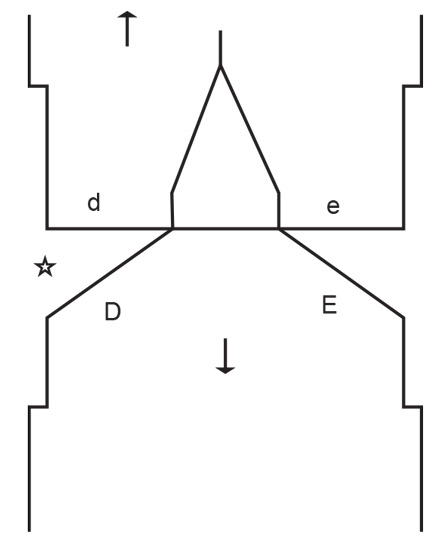


What can you do with our patterns? You can share DROPS patterns online, using the pattern original picture, materials, name and number. But you are NOT ALLOWED to reproduce the complete pattern digitally in any way. Yarn stores are welcome to use the DROPS pattern database to promote the sale of our assortment. You can print out our patterns, make as many copies as you’d like. The only thing we ask is that you don't make any changes / additions to the original printed document. And that the patterns according to the DROPS philosophy are given out to the consumers for free. Editorials that wish to publish our patterns in printed books or magazines can contact us for more information. The sale of garments based on DROPS patterns is permitted as long as they are sold as single items or per order. Further commercial use of the patterns is not permitted. It has to be clearly stated that the garment is made based on a design from DROPS DESIGN. The use of clothing labels of which DROPS DESIGN forms part is conditioned by the inclusion of the following text: “A DROPS DESIGN made by …..”. The use of DROPS photos for marketing purposes/sales is only permitted in connection with the use/sale of DROPS products. The photos may not be cut or edited and the logo should be clearly visible.
We reserve the right to withdraw the permission for use of our patterns at any time, notwithstanding the reason.
Each of our patterns has specific tutorial videos to help you.
These step-by-step tutorials might also help you:
Why is the knitting/crochet tension so important?
Knitting tension is what determines the final measurements of your work, and is usually measured per 10 x 10 cm. It is provided like so: number of stitches in width x number of rows in height - eg: 19 stitches x 26 rows = 10 x 10 cm.
The knitting tension is very individual; some people knit/crochet loosely while others work tightly. You adjust the knitting tension with the needle size, which is why the suggested needle size is only meant as a guide! You need to adjust this (up or down) to ensure that YOUR knitting tension matches the knitting tension provided in the pattern. If you work with a different knitting tension than provided you will have a different yarn consumption, and your work will have different measurements than what the pattern suggests.
The knitting tension also determines which yarns can replace each other. As long as you achieve the same knitting tension you can replace one yarn with another.
See DROPS lesson: How to measure your tension/gauge
See DROPS video: How to make a gauge tension swatch
How do I know how many balls of yarn I need?
The required amount of yarn is provided in grams, eg: 450 g. To calculate how many balls you’ll need you first need to know how many grams are in 1 ball (25g, 50g or 100g). This information is available if you click on the individual yarn quality on our pages. Divide the amount required with the amount of each ball. For example, if each ball is 50g (the most common amount), the calculation will be as follows: 450 / 50 = 9 balls.
Can I use a different yarn than what the pattern suggests?
The important thing when changing from one yarn to another is that the knitting/crochet tension remains the same. This is so that the measurements of the finished piece will be the same as on the sketch provided. It is easier to achieve the same knitting tension using yarns from the same yarn group. It is also possible to work with multiple strands of a thinner yarn to achieve the knitting tension of a thicker one. Please try our yarn converter. We recommend you to always work a test swatch.
Please NOTE: when changing yarn the garment might have a different look and feel to the garment in the photo, due to individual properties and qualities of each yarn.
See DROPS lesson: Can I use a different yarn than the one mentioned in the pattern?
What are the yarn groups?
All our yarns are categorised into yarn groups (from A to F) according to thickness and knitting tension – group A contains the thinnest yarns and group F the thickest. This makes it easier for you to find alternative yarns to our patterns, should you wish to switch yarn. All yarns within the same group have a similar knitting tension and can easily replace each other. However, different yarn qualities have different structures and properties which will give the finished work a unique look and feel.
How do I use the yarn calculator?
At the top of all our patterns you’ll find a link to our yarn calculator, which is a helpful tool should you wish to use a different yarn than suggested. By filling in the yarn quality you wish to replace, the amount (in your size) and number of strands, the calculator will present good alternative yarns with the same knitting tension. Additionally it will tell you how much you’ll require in the new qualities and whether you’ll need to work with multiple strands. Most skeins are 50g (some are 25g or 100g).
If the pattern is worked with multiple colours, every colour will have to be calculated separately. Similarly, if the pattern is worked with several strands of different yarns (for example 1 strand Alpaca and 1 strand Kid-Silk) you will have to find alternatives for each, individually.
Why do you show discontinued yarns in the patterns?
Since different yarns have different qualities and textures we have chosen to keep the original yarn in our patterns. However, you can easily find options among our available qualities by using our yarn calculator, or simply pick a yarn from the same yarn group.
It is possible that some retailers still have discontinued yarns in stock, or that someone has a few skeins at home that they would like to find patterns for.
The yarn calculator will provide both alternative yarn as well as required amount in the new quality.
What size should I knit?
If you think it's hard to decide what size to make, it can be a good idea to measure a garment you own already and like the size of. Then you can pick the size by comparing those measures with the ones available in the pattern's size chart.
You'll find the size chart at the bottom of the pattern.
See DROPS lesson: How to read size chart
Why do I get the wrong knitting tension with the suggested needle size?
The needle size provided in the pattern serves only as a guide, the important thing is to follow the knitting tension. And since knitting tension is very individual, you will have to adjust the needle size to ensure that YOUR tension is the same as in the pattern – maybe you’ll have to adjust 1, or even 2 needle sizes, up or down to achieve the correct tension. For this, we recommend that you work test swatches.
Should you work with a different knitting tension than the one provided, the measurements of the finished garment might deviate from the measurement sketch.
See DROPS lesson: How to measure your tension/gauge
See DROPS video: How to make a tension/gauge swatch
Why is the pattern worked top-down?
Working a garment top-down provides more flexibility and room for personal adjustment. For example it is easier to try the garment on while working, as well as making adjustments to length of yoke and shoulder caps.
The instructions are carefully explaining every step, in the correct order. Diagrams are adjusted to the knitting direction and are worked as usual.
How do I work according to a knitting diagram?
The diagram depicts all rows/rounds, and every stitch seen from the right side. It is read from bottom to top, from right to left. 1 square = 1 stitch.
When working back and forth, every other row is worked from the right side and every other row is worked from the wrong side. When working from the wrong side, the diagram will have to be worked reversed: from left to right, knit stitches are purled, purl stitches are knit etc.
When working in the round every round is worked from the right side and the diagram are worked from right to left on all rounds.
See DROPS lesson: How to read knitting diagrams
How do I work according to a crochet diagram?
The diagram depicts all rows/rounds, and every stitch seen from the right side. It is worked from bottom to top, from right to left.
When working back and forth every other row is worked from the right side: from right to left and every other row is worked from the wrong side: from left to right.
When working in the round, every row in the diagram are worked from the right side, from right to left.
When working a circular diagram you start in the middle and work your way outwards, counter clockwise, row by row.
The rows usually start with a given number of chain stitches (equivalent to the height of the following stitch), this will either be depicted in the diagram or explained in the pattern.
See DROPS lesson: How to read crochet diagrams
How do I work several diagrams simultaneously on the same row/round?
Instructions for working several diagrams after each other on the same row/round, will often be written like so: “work A.1, A.2, A.3 a total of 0-0-2-3-4 times". This means you work A.1 once, then A.2 is worked once, and A.3 is repeated (in width) the number of times provided for your size – in this case like so: S = 0 times, M = 0 times, L=2 times, XL= 3 times and XXL = 4 times.
The diagrams are worked as usual: begin with the first row in A.1, then work the first row in A.2 etc.
See DROPS lesson: How to read knitting diagrams
See DROPS lesson: How to read crochet diagrams
Why are the sleeves shorter in larger sizes?
The total width of the garment (from wrist-to-wrist) will be larger in the larger sizes, despite the actual sleeves being shorter. The larger sizes have longer sleeve caps and wider shoulders, so there will be a good fit in all sizes.
Where on the garment is the length measured?
The measurement sketch/schematic drawing provides information regarding the full length of the garment. If it’s a jumper or a jacket the length is measured from the highest point on the shoulder closest to the neckline, and straight down to the bottom of the garment. It is NOT measured from the tip of shoulder. Similarly, the length of yoke is measured from the highest point on the shoulder and down to where yoke is split into body and sleeves.
On a jacket measures are never taken along bands, unless specifically stated. Always measure inside band stitches when measuring the length.
See DROPS lesson: How to read a schematic drawing
What is a repeat?
Diagrams are often repeated on the round or in height. 1 repeat is the diagram the way it appears in the pattern. If it says to work 5 repeats of A.1 in the round, then you work A.1 a total of 5 times after/next to each other in the round. If it says to work 2 repeats of A.1 vertically/in height you work the entire diagram once, then begin again at the start and work the entire diagram one more time.
Why does the piece start with more chain stitches than it’s worked with?
Chain stitches are slightly narrower than other stitches and to avoid working the cast-on edge too tight, we simply chain more stitches to begin with. The stitch count will be adjusted on the following row to fit the pattern and measurement sketch.
Why increase before the rib edge when the piece is worked top-down?
The rib edge is more elastic and will contract slightly compared to, for example, stocking stitch. By increasing before the rib edge, you avoid a visible difference in width between the rib edge and the rest of the body.
Why increase in the cast-off edge?
It’s very easy to cast off too tightly, and by making yarn overs while casting off (and simultaneously casting these off) you avoid a too tight cast off edge.
See DROPS video: How to bind off with yarn overs (yo)
How do I increase/decrease on every 3rd and 4th row/round alternately?
To achieve an even increase (or decrease) you can increase on, for example: every 3rd and 4th row alternately, like so: work 2 rows and increase on the 3rd row, work 3 rows and increase on the 4th. Repeat this until the increase is complete.
See DROPS lesson: Increase or decrease 1 st on every 3rd and 4th row alternately
How can I work a jacket in the round instead of back and forth?
Should you prefer to work in the round instead of back and forth, you may of course adjust the pattern. You’ll need to add steeks mid-front (usually 5 stitches), and follow the instructions. When you would normally turn and work from the wrong side, simply work across the steek and continue in the round. At the end you’ll cut the piece open, pick up stitches to work bands, and cover the cut edges.
See DROPS video: How to knit steeks and cut open
Can I work a jumper back and forth instead of in the round?
Should you prefer to work back and forth instead of in the round, you may of course adjust the pattern so you work the pieces separately and then assemble them at the end. Divide the stitches for the body in 2, add 1 edge stitch in each side (for sewing) and work the front and back pieces separately.
See DROPS lesson: Can I adapt a pattern for circular needles into straight needles?
Why is the pattern slightly different than what I see in the photo?
Pattern repeats can vary slightly in the different sizes, in order to get the correct proportions. If you’re not working the exact same size as the garment in the photo, yours might deviate slightly. This has been carefully developed and adjusted so that the complete impression of the garment is the same in all sizes.
Make sure to follow instructions and diagrams for your size!
How do I make a women’s size garment into a men’s size one?
If you have found a pattern you like which is available in women’s size it’s not very difficult to convert it to men’s size. The biggest difference will be the length of sleeves and body. Start working on the women size that you think would fit across the chest. The additional length will be worked right before you cast off for the armhole/sleeve cap. If the pattern is worked top-down you can add the length right after the armhole or before the first decrease on sleeve.
Regarding additional yarn amount, this will depend on how much length you add, but it is better with a skein too many than too few.
How do I prevent a hairy garment from shedding?
All yarns will have excess fibres (from production) that might come off as lint or shedding. Brushed yarns (ie hairier yarns) have more of these loose, excess fibres, causing more shedding.
Shedding also depends on what is worn under or over the garment, and whether this pulls at the yarn fibres. It’s therefore not possible to guarantee that there will be no shedding
Below are some tips on how to get the best result when working with hairier yarns:
1. When the garment is finished (before you wash it) shake it vigorously so the looser hairs come off. NOTE: do NOT use a lint roller, brush or any method that pulls at the yarn.
2. Place the garment in a plastic bag and put it in your freezer - the temperature will cause the fibres to become less attached to each other, and excess fibres will come off easier.
3. Leave in the freezer for a few hours before taking it out and shaking it again.
4. Wash the garment according to the instructions on the yarn label.
Why does my garment pill?
Pilling is a natural process that happens to even the most exclusive of fibers. It's a natural sign of wear and tear that is hard to avoid, and that is most visible in high friction areas of your garment like a sweater's arms and cuffs.
You can make your garment look as new by removing the pilling, using a fabric comb or a pill/lint remover.
In the meantime, you can read the questions and answers that others have left to this pattern or join the DROPS Workshop on Facebook to get help from fellow knitters/crocheters!
You might also like...
Elodie Cardigan |
||||||||||
 |
 |
|||||||||
Knitted jacket in DROPS Air. The piece is worked top down with European/diagonal shoulders and V-neck. Sizes S - XXXL.
DROPS 240-29 |
||||||||||
|
------------------------------------------------------- EXPLANATIONS FOR THE PATTERN: ------------------------------------------------------- RIDGE/GARTER STITCH (worked back and forth): Knit all rows. 1 ridge = knit 2 rows. INCREASE TIP FROM RIGHT SIDE Increase towards the left AFTER MARKER: Use left needle to pick up thread between 2 stitches from row below, pick up thread from front and knit stitch in back loop. Increase towards the right BEFORE MARKER: Use left needle to pick up thread between 2 stitches from row below, pick up thread from behind and knit stitch in front loop. INCREASE TIP FROM WRONG SIDE: Increase towards the left AFTER MARKER: Use left needle to pick up thread between 2 stitches from row below, pick up thread from behind and purl stitch in front loop. Increase towards the right BEFORE MARKER: Use left needle to pick up thread between 2 stitches from row below, pick up thread from front and purl stitch in back loop. BUTTONHOLES: Work buttonholes on the right band (when the garment is worn). Work from the right side when there are 4 stitches left on the row as follows: Make 1 yarn over, knit 2 together and knit 2. On the next row (wrong side), knit the yarn over to leave a hole. Work buttonholes when the piece measures: S: 27, 34 and 41 cm. M: 27, 35 and 43 cm. L: 29, 37 and 45 cm. XL: 30, 38 and 47 cm. XXL: 32, 40 and 49 cm. XXXL: 33, 42 and 51 cm. DECREASE TIP (for sleeves): Decrease 1 stitch on either side of the marker-thread as follows: Work until there are 3 stitches left before the marker-thread, knit 2 together, knit 2 (marker-thread sits between these 2 stitches), slip 1 stitch as if to knit, knit 1 and pass the slipped stitch over the knitted stitch. ------------------------------------------------------- START THE PIECE HERE: ------------------------------------------------------- JACKET – SHORT OVERVIEW OF THE PIECE. The back piece is worked back and forth with circular needle, top down as far as the armholes. Stitches are knitted up along each shoulder and increased for the neck and the front pieces are worked back and forth with circular needle as far as the armholes. The back and front pieces are joined and the body continued back and forth with circular needle. Stitches are knitted up around each armhole and the sleeves are worked in the round with double pointed needles/short circular needle. The neck is worked to finish. BACK PIECE: Cast on 30-32-34-36-36-38 stitches with circular needle size 5 mm and DROPS Air. Purl 1 row from the wrong side. Insert 1 marker inside the 3 outermost stitches on each side. Keep the markers inside these 3 stitches onwards. Work stocking stitch back and forth. AT THE SAME TIME, increase AFTER the marker at the beginning of the row (seen from the right side) and BEFORE the marker at the end of the row – read INCREASE FROM RIGHT SIDE. On the next row (wrong side) increase in the same way – read INCREASE FROM WRONG SIDE. Increase from both the right and wrong side a total of 26-28-28-30-32-36 times. After the last increase there are 82-88-90-96-100-110 stitches. THE PIECE IS NOW MEASURED FROM HERE! Continue working until the piece measures 14-15-16-17-17-18 cm. Cut the yarn, put stitches on a thread or on an extra needle and work the front pieces as explained below. LEFT FRONT PIECE: Start on the left shoulder (when the garment is worn). Cast on 7 stitches (band), knit up 26-28-28-30-32-36 stitches inside 1 stitch along the left shoulder on the back piece (knit up 1 stitch in each row) = 33-35-35-37-39-43 stitches. Work stocking stitch with 7 stitches in GARTER STITCH-see description above, mid-front. When the piece measures 4 cm, increase at the beginning of each row from the right side for the neck, after the 7 garter stitches + 2 stocking stitches – remember INCREASE FROM RIGHT SIDE. Increase 1 stitch every 2nd row 10-11-12-13-13-14 times, every 4th row 3 times and every 6th row 2 times = 48-51-52-55-57-62 stitches. When the piece measures 24-25-26-27-29-30 cm, put stitches on a thread or on an extra needle after working the last row from the right side. Cut the yarn. Work the right front piece as explained below. RIGHT FRONT PIECE: Knit up 26-28-28-30-32-36 stitches inside 1 stitch along the right shoulder on the back piece then cast on 7 stitches at the end of the row (band) = 33-35-35-37-39-43 stitches. Work stocking stitch with 7 stitches in garter stitch mid-front. When the piece measures 4 cm increase at the end of each row from the right side for the neck, before 2 stocking stitches + 7 garter stitches – remember INCREASE FROM RIGHT SIDE. Increase 1 stitch every 2nd row 10-11-12-13-13-14 times, every 4th row 3 times and every 6th row 2 times = 48-51-52-55-57-62 stitches. When the piece measures 24-25-26-27-29-30 cm, work as follows from the wrong side: Work the 48-51-52-55-57-62 stitches on the right front piece, cast on 6-8-12-14-20-20 stitches work the 82-88-90-96-100-110 stitches on the back piece, cast on 6-8-12-14-20-20 stitches, work the 48-51-52-55-57-62 stitches on the left front piece. BODY: = 190-206-218-234-254-274 stitches. Continue back and forth with stocking stitch and garter stitch - REMEMBER THE BUTTONHOLES – see description above, for a further 42-44-46-48-50-52 cm. Knit 1 row from the right side and increase 62-62-70-74-82-90 stitches evenly spaced (do not increase over the bands) = 252-268-288-308-336-364 stitches. Change to circular needle size 4 mm. Work rib as follows from the wrong side: 7 garter stitches, * purl 2, knit 2 *, work from *-* until there are 9 stitches left, purl 2 and 7 garter stitches. Continue this rib for 10 cm. Cast off. LEFT SLEEVE: Using circular needle size 5 mm, knit up from the right side 40-42-45-45-49-51 stitches from the bottom of the armhole and up the front piece to the shoulder, then 24-26-27-29-29-31 stitches from the shoulder to the bottom of the armhole down the back piece = 64-68-72-74-78-82 stitches. Insert 1 marker in the middle of the stitches picked up. Work now back and forth in stocking stitch with short rows for the sleeve cap, to gives a better shape to the sleeve. 1st row (from wrong side): work to 16 stitches after marker, turn. 2nd row (from right side): work to 16 stitches after marker, turn. 3rd row (from wrong side): work to 20 stitches after marker, turn. 4th row (from right side): work to 20 stitches after marker, turn. 5th row (from wrong side): work to 24 stitches after marker, turn. 6th row (from right side): work to 24 stitches after marker, turn. 7th row (from wrong side): work to the beginning of the row. Work stocking stitch back and forth for 5-5-7-7-9-9 cm, measure from where the stitches were picked up (all length are measured mid on top of sleeve). Join the sleeve, using short circular needle/double pointed needles size 5 mm and continue in the round. Insert 1 marker thread at the beginning of the round (mid-under sleeve). Allow the thread to follow your work onwards. Start at the marker-thread and continue with stocking stitch until the sleeve measures 7-7-9-9-11-11 cm from the knitted-up stitches. Decrease 2 stitches under the sleeve – read DECREASE TIP. Decrease like this every 5½-4½-3½-3½-2½-2 cm a total of 6-7-8-8-9-10 times = 52-54-56-58-60-62 stitches. Continue working until the sleeve measures 38-37-38-37-37-35 cm. There is approx. 10 cm left; try the jacket on and work to desired length before the rib. Knit 1 round and increase 16-18-16-18-20-18 stitches evenly spaced = 68-72-72-76-80-80 stitches. Change to double pointed needles size 4 mm and work rib (knit 2, purl 2) for 10 cm. Cast off a little loosely. The sleeve measures approx. 48-47-48-47-47-45 cm. RIGHT SLEEVE: Work the same way as the left sleeve, but first knit up 24-26-27-29-29-31 stitches from the bottom of the armhole up the back piece to the shoulder, then 40-42-45-45-49-51 stitches from the shoulder down the front piece. Sew the bottom of the armholes. NECK Knit up 1 stitch in each of the 7 garter stitches at the top of the right front piece, work garter stitch back and forth for 8-9-9-10-10-10 cm; check that the band reaches approx. midway at the back of the neck when stretched slightly. Cast off. Work in the same way from the band on the left front piece. Sew the bands together mid-back and sew the neck to the neckline. ASSEMBLY: Sew the buttons onto the left band. |
||||||||||
Diagram explanations |
||||||||||
|
||||||||||

|
||||||||||

|
||||||||||

|
||||||||||
|
Have you made this or any other of our designs? Tag your pictures in social media with #dropsdesign so we can see them! Do you need help with this pattern?You'll find tutorial videos, a Comments/Questions area and more by visiting the pattern on garnstudio.com. © 1982-2024 DROPS Design A/S. We reserve all rights. This document, including all its sub-sections, has copyrights. Read more about what you can do with our patterns at the bottom of each pattern on our site. |
||||||||||
With over 40 years in knitting and crochet design, DROPS Design offers one of the most extensive collections of free patterns on the internet - translated to 17 languages. As of today we count 304 catalogues and 11422 patterns - 11422 of which are translated into English (UK/cm).
We work hard to bring you the best knitting and crochet have to offer, inspiration and advice as well as great quality yarns at incredible prices! Would you like to use our patterns for other than personal use? You can read what you are allowed to do in the Copyright text at the bottom of all our patterns. Happy crafting!








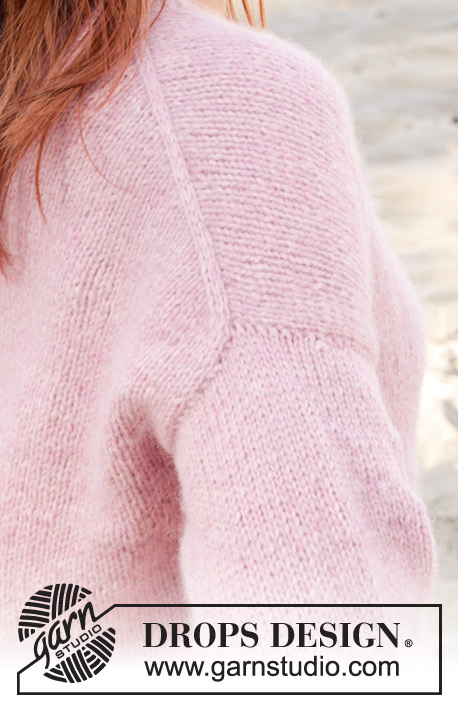


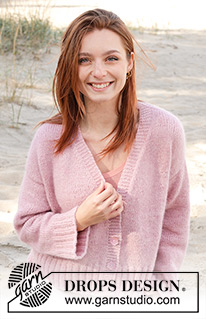





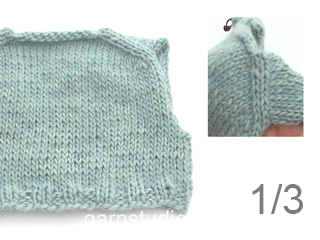
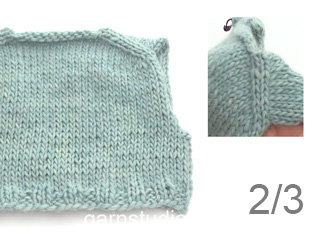
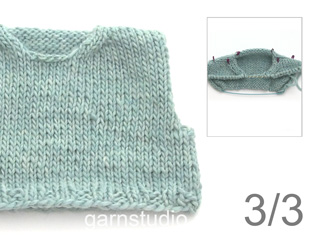
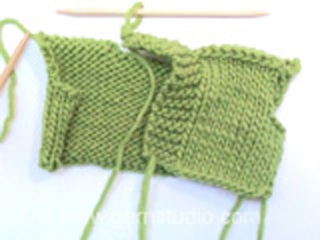



























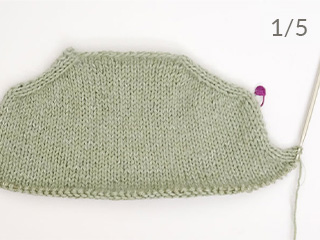
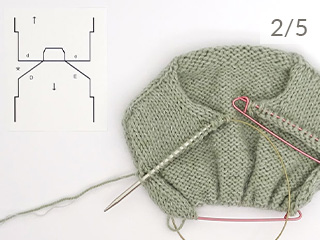
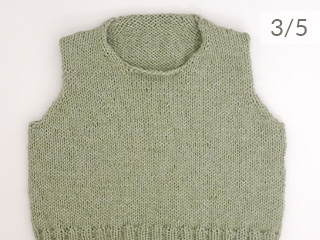
























Comments / Questions (28)
Bonjour La finition du col proposée ne donne pas un excellent rendu. J’ai donc modifié et fait une seule bande d’encolure que j’ai cousu à point arrière. Le rendu est bien plus joli. N’y aurait il pas une autre solution possible? Le gilet est vraiment superbe. Isa
13.03.2024 - 07:38DROPS Design answered:
Bonjour Mme Robert, vous pouvez peut-être vous inspirer de cette vidéo où on montre comment coudre un bord point mousse (emmanchure dans la vidéo, col dans ce modèle) le long du jersey (manche dans la vidéo, encolure dos dans ce gilet). Bon assemblage!
13.03.2024 - 08:29Hi again, increasing every 2nd row, is that: increase on the right side, no increase wrong side and then increase on the right side again? Or am I knitting a whole right and wrong side as well as a non increase? Thanks.
11.03.2024 - 06:57DROPS Design answered:
Dear Nicole, increasing every second row is increasing every row from the right side (and no increase on th ewrong side). I hope this helps. Happy Knitting!
11.03.2024 - 09:24Hello, on the front left shoulder, increasing 1 stitch every 2nd row, am I increasing 3 stitches every 4th roe? What does it mean “every 4th row 3 times”? Thank you 🌷
10.03.2024 - 15:06DROPS Design answered:
Dear Nicole, Increase 1 stitch every 2nd row 10-11-12-13-13-14 times, every 4th row 3 times and every 6th row 2 times. This means that you increase 1 stitch every other row (one row with increases, one row without increases)10-11-12-13-13-14 times. Then, increase 1 stitch every 4th row (1 row with increases, 3 without increase) 3 times. Then, increase 1 stitch every 6th row (1 row with increases, 5 without increases) 2 times. Happy knitting!
11.03.2024 - 00:18Dzień dobry, nie do końca wiem jak na rękawie przerobić główkę rękawa za pomocą rzędów skróconych. Od 7 rzędu przerabiałam 48 oczek tam i z powrotem aż do uzyskania 7cm na górze ramienia, natomiast 20 oczek znajdujące się od strony pachy nie przerabiałam. Następnie miałam połączyć oczka z rzędów skróconych z oczkami nieprzerabianymi i kontynuować na okrągło, ale powstała brzydka dziura pomiędzy tymi grupami oczek. Czy zrobiłam coś źle? Pozdrawiam
20.02.2024 - 22:51DROPS Design answered:
Witaj Dominiko, wszystko jest ok. Teraz będziesz wszywać tą górną część rękawa do dołu podkroju rękawa (do tyłu/przodu), czyli zszywasz b z B, jak na schemacie z czarną gwiazdką na dole wzoru. Pozdrawiamy!
21.02.2024 - 09:40Hello. Please can you confirm from what point is the measurement taken in order to make the buttonholes. Is it from the marker on the shoulder where the pattern says "THE PIECE IS MEASURED FROM HERE!" ? or from the front piece? Many thanks
12.02.2024 - 18:50DROPS Design answered:
Hi Norma, The positioning of the buttonholes is measured from the top of the front piece (from the knitted-up stitches). Happy crafting!
13.02.2024 - 06:46Hallo, ich habe eine Frage zu den Vorderteilen. In der Anleitung steht dass in JEDER Reihe 2 Maschen zugenommen werden. Und anschließend steht dass in dieser Weise in jeder 2./3./6. Reihe jeweils eine Masche zugenommen wird. Was heißt das? Werden also zum Beispiel 2 Maschen zugenommen und in der 2. Reihe 3 Maschen zugenommen ? Oder werden auf der hinreihe 2 Maschen zugenommen und auf der Rückreihe 1 Masche?
19.01.2024 - 21:18DROPS Design answered:
Liebe Sabrina, die Zunahmen für den Halsausschnitt werden am Ende einer Hin-Reihe, dh zuerst in jeder 2. Reihe. = bei jeder Hin-Reihe dann in jeder 4. Reihe = in jeder 2. Hin-Reihe dann in jeder 6. Reihe = in jeder 3. Hin-Reihe. Viel Spaß beim stricken!
22.01.2024 - 08:02Ciao! Nella porzione del corpo, c’e scritto di aumentare 62 maglie uniformemente (sto lavorando una M). Non capisco se si intende di lavorarla per l’intera lunghezza del corpo o nel primo ferro del corpo. Grazie in anticipo!
16.01.2024 - 20:22DROPS Design answered:
Buonasera Luna, deve aumentare tutte le maglie nel ferro a diritto indicato. Buon lavoro!
17.01.2024 - 16:53Hallo! Ich wüsste gern, welche Nadelstärke und -länge ich verwenden muss wenn ich die Ärmel mit einer Rundnadel anstatt mit einem Nadelspiel stricken möchte.
05.01.2024 - 14:06DROPS Design answered:
Liebe Ka, wenn Sie mit einer Rundnadel stricken möchten, stricken Sie dan nmit einer 40 cm am Anfang dann wenn es weniger Maschen sind mit dem Nadelspiel oder mit Magic Loop und 8O cm Rundnadel, siehe hier. Viel Spaß beim stricken!
05.01.2024 - 15:44Witam, jak mierzyć długość robótki, dziękuję, pozdrawiam serdecznie i życzę szczęścia w Nowym Roku
02.01.2024 - 12:35DROPS Design answered:
Witaj Małgosiu, również najlepsze życzenia na Nowy Rok. Napisz dokładnie o jaki wymiar Ci chodzi?
02.01.2024 - 13:09Hallo, ich bin jetzt bei den Ärmeln des Elodie Cardigan. Ich verstehe nicht, warum die waagrechten Maschen des Armauschnitts nicht mit aufgefasst werden. Sie werden zu keinem Zeitpunkt danach in der Anleitung erwähnt ? Und es wird auch nicht in Runde gestrickt. Ich habe gerade gesehen, dass es eine "neue Anleitung" für den Ärmel existiert, ersetzt diese komplett den Text in ihrer Anleitung ? und werden die Maschenanzahl dann zu denen in der Anleitung gezählt ?
15.12.2023 - 22:50DROPS Design answered:
Liebe Frau Müller, die ersten cm von dem Ärmel werden in Hin- und Rückreihen gestrickt, dann diese Reihen werden zu den angeschlagenen Maschen für das Armloch zusammengenäht - wie beim Figur - siehe schwarzes Sternchen. Dann wird der Ärmel in Runden gestrickt. Viel Spaß beim stricken!
18.12.2023 - 08:15